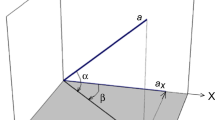Abstract
Low amounts of polypropylene fibres are added to concrete as a secondary reinforcement to control cracking. Whether this addition might improve the corrosion resistance of the concrete reinforcement by increasing the resistance to carbonation, via reducing penetrating paths, is the subject addressed in the present paper.
Crack control by the fibres in plastic state mortars and crack evolution with time have been studied. Furthermore, the influence of crack width on the steel bar corrosion induced by carbonation has also been monitored. Circular specimens made of mortar have been employed in the experimental phase of the study, using a water/cement ratio of 0.50 and cement/sand ratio of 2/1. The polypropylene fibre content was 0% and 0.5% by volume.
Low modulus polypropylene fibres may control the crack width in specimens subjected to inadequate curing conditions. No relationship between crack width and time for corrosion initiation has been observed. However, a beneficial effect of fibre addition on the corrosion rate was found.
Résumé
De petites quantités de fibres de polypropylène sont ajoutées au béton comme renforcement secondaire pour éviter la fissuration. L’objet de cet article est de déterminer si l’ajout des fibres peut améliorer la résistance à la corrosion de l’armature métallique par la réduction des chemins de propagation.
La réduction de la fissuration par l’ajout de fibres dans des mortiers frais et l’évolution de la fissuration dans le temps ont été étudiées. De plus, on a mesuré l’influence de la largueur des fissures sur la corrosion des armatures métalliques provoquée par la carbonatation. Les éprouvettes étaient des disques de mortier ayant un rapport eau/ciment de 0,50 et un rapport ciment/sable de 2/1. La teneur en fibres de polypropylène était de 0% et 0,5% en volume.
Des fibres de module faible peuvent contrôler l’épaisseur des fissures dans des éprouvettes soumises à une mauvaise cure. Aucune relation entre l’épaisseur de la fissure et le temps pour l’initiation de la corrosion n’a été constatée. Cependant, on a trouvé que l’ajout de fibres a un effet bénéfique sur le taux de corrosion.
Similar content being viewed by others
References
François, R. and Arliguie, G., ‘Reinforced concrete: Correlation between cracking and corrosion’, in ‘Durability of Concrete’, ACI-SP-126-65 (1991) 1221–1238.
Beeby, A.W., ‘Cracking, cover, and corrosion of reinforcement’,Concrete International (1983) 35–40.
Martin, H., Schiessl, P., ‘The influence of cracks on the corrosion of steel’, in ‘Concrete Preliminary Report RILEM Int. Symp. on the Durability of Concrete’, Prague, 1969.
Malisch, W.R., ‘Polypropylene fibers in concrete’,Concrete Construction (1986) 363–368.
Malisch, W.R. ‘How well do polypropylene fibers control cracking?’Concrete Construction (1986) 371–377.
Sanjuán, M.A., Bacle, B., Moragues, A. and Andrade, C. ‘Plastic shrinkage and permeability in polypropylene reinforced mortar’, in ‘Thin Section Fiber Reinforced Concrete and Ferrocement’, ACI-Sp-124-7 (1989) 125–136.
Strong, H., Mobasher, B. and Shah, S.P., ‘Quantitative damage characterization in polypropylene fiber reinforced concrete’,Cem. and Concr. Res. 20 (1990) 540–558.
Swamy, R.N. and Stavrides, H., ‘Influence of fiber reinforcement on restrainted shrinkage’,J. Amer. Concr. Inst. (1979) 443–460.
Krenchel, H. and Shah, S.P., ‘Restrained shrinkage tests with polypropylene fiber reinforced concrete’, in ‘Fibre Reinforced Concrete Properties and Applications’, Eds. S.P. Shah and G.B. Batson, ACI Sp-105 (1987) 141–158.
Stern, M. and Geary, G., ‘Electrochemical polarization I: A theoretical analysis of the slope of polarization curves’,J. Electrochemical. Soc. (1957) 104.
Andrade, C. and González, J.A., ‘Quantitative corrosion rate of reinforcing steels embedded in concrete using polarization resistance measurements’,Werkstoffe und Korrosion 29 (1978) 515–519.
Massat, M., ‘Caractérisation de la microfissuration, de la perméabilité et de la diffusion d’un béton: application au conteneurage des déchets radioactifs’, Ph.D. Thesis. INSA-Toulouse (1991).
Al-Tayyid, A-H.J. and Al-Zahrani, M.M., ‘Corrosion of steel reinforcement in polypropylene fiber reinforced concrete structures’,ACI Mat. J. 2 (1990) 108–113.
Sanjuán, M.A., Andrade, C. and Bentur, A., ‘Effect of crack control in mortars containing polypropylene fibers on the corrosion of steel in a cementitious matrix’,ACI Mat. J. 2 (1997) 134–141.
Author information
Authors and Affiliations
Additional information
Editorial Note Dr. M.A. Sanjuan and Dr. Carmen Andrade work at the Instituto de Ciencias de la Construccion “Eduardo Torroja”, Spain, a RILEM Titular Member. Dr. Andrade is Vice President of RILEM and a member of the Coordinating Committee. A RILEM Senior member and a RILEM Fellow. Dr. Andrade is Chairlady of TCs 154-EMC (Electrochemical Techniques for Measuring Metallic Corrosion in Concrete) and TMC (Testing and Modelling Chloride Penetration in Concrete) and participates in the work of TC 116-PCD (Permeability of Concrete as a Criterion of its Durability). Prof. Amon Bentur is a RILEM Senior Member and Co-chairman of TC 159-ETC (Engineering of the Interfacial Transition Zone in Cementitious Composites). He also participates in TC LPC (Long-term Performance Characteristics of the Fibre Cement Composites). Prof. A. Bentur works at the National Building Research Institute, Israel, a RILEM Titular Member. He is the RILEM National Delegate for Israel.
Rights and permissions
About this article
Cite this article
Sanjuán, M.A., Andrade, C. & Bentur, A. Effect of polypropylene fibre reinforced mortars on steel reinforcement corrosion induced by carbonation. Mat. Struct. 31, 343–349 (1998). https://doi.org/10.1007/BF02480677
Received:
Accepted:
Issue Date:
DOI: https://doi.org/10.1007/BF02480677




